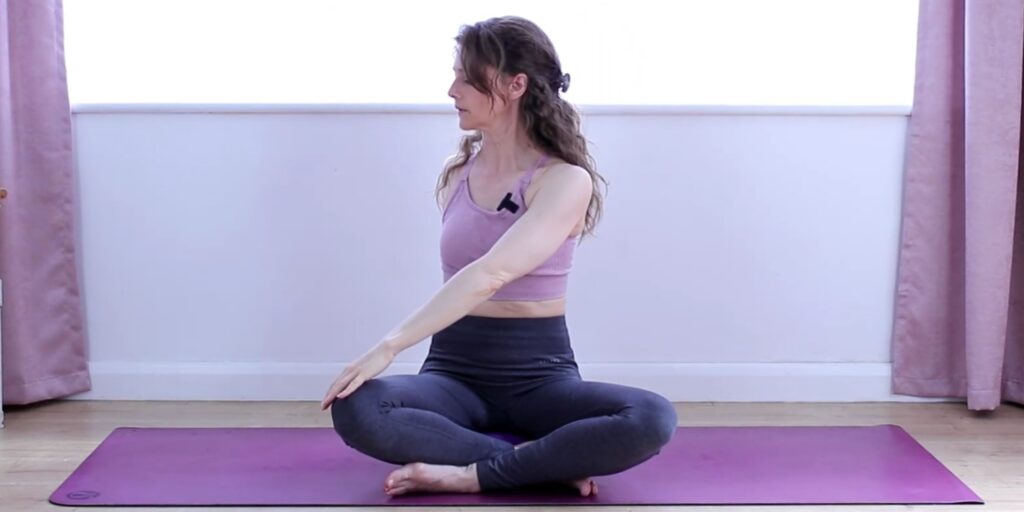
Hey friends! 🌟
Have you ever heard of kriyas? If you’re someone who’s into yoga, meditation, or just exploring ways to feel more centred and balanced, then you might be familiar with this powerful practice.
Yoga classes are amazing for building strength and flexibility, but sometimes they seem to focus a lot on the physical side—like perfecting the poses and flowing through movements. Although those aspects are fun and of course extremely beneficial, yoga is so much more than just the asanas (poses).
The deeper magic of yoga is in the stuff we often skip over: things like breathwork (pranayama), meditation, and tuning into yourself with mindfulness. These are the practices that really help quiet the mind and create that sense of inner calm.
Asanas are just one part of the whole picture. If we only stick to the physical, we might miss out on yoga’s real potential—transforming not just how we move but how we feel, breathe, and connect with ourselves on a deeper level. And this is where kriyas come in.
Kriyas (intentional repetitive movements or cleansing practice) help us go even deeper by clearing energy blocks, detoxifying the body, and balancing the mind. They’re like the missing link that ties everything together, making yoga not just a workout but a truly transformative practice.
If you’re not familiar with the concept of kriyas don’t worry – I’m here to give you the inside scoop on why kriyas can be a total game-changer in your wellness routine!
The practice of Kriya yoga has been transformative in my life. In moments where I feel swamped by emotions or external circumstances, I turn to Kriyas to find my centre. The practice helps me re-establish a connection with my body and breath, allowing me to release pent-up energy and regain a sense of calm and clarity. Through Kriyas, I am able to shift my perspective, moving from a place of overwhelm to a place of groundedness and inner peace.
I began practicing yoga over 12 years ago, and have been teaching it for the same amount of time. While kriya aspects have always been incorporated into my practice, I haven’t always approached them with the same structure as perhaps a traditional kundalini sequence. However, Kriyas became very important to me once I began to intentionally and purposefully cleanse my body chakras.
By dedicating just one hour each morning to cleansing my body, I’ve noticed profound shifts in both my energy and mood. This practice, which I do first thing after waking up, has become a key part of my daily routine. It helps me reset, re-energise, and clear away any lingering tension or stress from the previous day. In this blog, you can find stage one of my morning kriya practice that focuses on breathing exercises) so you can try it out too and experience the same benefits!

In simple terms, kriyas are a series of physical, mental, and spiritual practices designed to purify the body, mind, and energy. The word “kriya” comes from Sanskrit, meaning “action” or “deed,” and when we talk about kriyas in yoga, we’re referring to intentional actions that help us clear blockages, boost energy, and deepen our connection to ourselves and the world around us. Powerful techniques that can be used to awaken, elevate, and harmonize subtle energies within the body. They facilitate higher states of consciousness and spiritual growth, supporting the transcendence of energy.
These intentional actions include: breathing exercises, cleansing practices, mantras, and even specific yoga poses. They’re like little rituals that can make you feel more alive, grounded, and connected.
You may be wondering, “Okay, so how can these kriyas help me?” Well, they’re incredibly effective for a few key reasons.

So, you might be wondering what kind of kriyas in yoga you can incorporate into your routine. There are different kinds depending on what you’re looking to achieve:

If you’re new to kriyas, no need to stress! You don’t have to dive into all the complex practices right away. Here’s how you can get started:
To lay a strong foundation for your practice, begin with calming and grounding breathing techniques. Here’s how:
These techniques help settle your mind, regulate your breath, and prepare you for deeper practices like yoga, meditation, or chanting.
Incorporating movement into your practice helps awaken your energy and release physical and mental tension. Here’s how you can seamlessly integrate kriya-inspired movements:
Downward Dog (Adho Mukha Svanasana):
This combination of flow and stillness not only energizes your body but also aligns your mind and breath, creating a holistic and revitalizing experience.
Mantras are a powerful tool to focus your mind and connect with your inner self. Here’s how to easily integrate them into your practice:
Even a few minutes of mantra practice can bring a sense of calm, clarity, and connection, making it an accessible and transformative addition to your routine.
If you’re feeling overwhelmed, remember that less is more. Start with just one kriya practice a day to ease into the routine.
Consistency matters more than complexity. Taking small, manageable steps helps you create a sustainable and effective practice.
My morning routine commences with a breathing exercise designed to center my mind and energize my body. I start with four cycles of deep, rhythmic breaths, each cycle consisting of a slow, deliberate 4-second inhale through my nose, followed by a gentle 4-second exhale through my mouth.
I then transition into the next phase, incorporating breath retention to further enhance focus and control. This involves four more cycles, each consisting of a 4-second inhale, 4 seconds of holding the breath (Antar Kumbhaka), a 4-second exhale, and another 4 seconds of holding the breath (Bahya Kumbhaka). The controlled pauses allow for a deeper connection to my breath and a heightened sense of awareness.
Following this, I move into a more dynamic breathing technique, Kapalabhati. This involves three sets of twenty rapid, forceful exhalations through the nose, each followed by a passive inhale. The rhythmic contractions of the diaphragm and abdomen during Kapalabhati help to invigorate the body and clear the mind.
I then practice Bhastrika, taking thirty deep, fast inhales through the nose, each followed by a passive exhale through the mouth. This rapid breathing technique further energizes the body and increases oxygen intake.
Finally, I take one deep, cleansing breath in through my nose, filling my lungs to their capacity, and exhale completely through my mouth, releasing any residual tension. I finish with 60 seconds of Bahya Kumbhaka (holding the breath after exhalation), allowing my body and mind to fully integrate the benefits of the breathing practice and prepare for the day ahead.
Translates to “Skull Shining Breath” or “Frontal Brain Cleansing Breath.”
Kapal (कपाल) means “skull” or “forehead,” and
Bhati (भाति) means “shining” or “glow.”
The Sanskrit term that refers to a cleansing practice specifically for the nasal passages.
Neti (नेति) comes from the Sanskrit root “na” meaning “not” and “ti” meaning “this” or “that,” which together roughly translate to “not this” or “not that,” symbolizing the practice of removing impurities.
Anulom (अनुलोम) means “with the grain” or “in the direction of the flow” (referring to breathing in the natural or correct direction).
Vilom (विलोम) means “against the grain” or “opposite the flow” (referring to breathing against or reversing the direction).
Sanskrit word that refers to a yogic practice of focused gazing.
Types of sacred sound, word, or phrase that is repeated during meditation or spiritual practice.
Specific Sanskrit term that refers to a form of spiritual energy believed to be coiled at the base of the spine.
Referring to the vital life force or energy that permeates all living things.
Sanskrit term that refers to a specific type of pranayama or breathing technique, often known as “Bellows Breath.”
Yogic cleansing practice that involves drinking water and inducing vomiting to cleanse the stomach.
This term that refers to a specific type of controlled breathing used in yoga, often called the “Victorious Breath” or “Ocean Breath.”
A Sanskrit term that refers to the practice of Sun Salutations in yoga.
Refers to the practice of holding the breath after inhalation.
The yoga term for holding the lungs empty after exhalation is
Bahya (बाह्य) means “external” or “outside.”
Kumbhaka (कुम्भक ) refers to breath retention.
Learn more about the power of Kundalini yoga and it’s specific powers at:
Like this article?

Personal, business and spiritual development coaching, yoga classes and private tuition, wellness consultancy.
Hello, I am Anna the creator of WellbeingWinnie – my dream that grows bigger and more exciting everyday, inspired because of an illness called myalgic encephalomyelitis (M.E) which I have had for 25 years.
Leave a comment